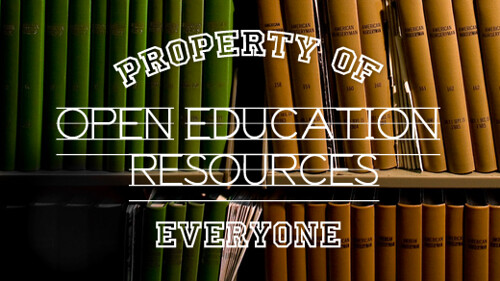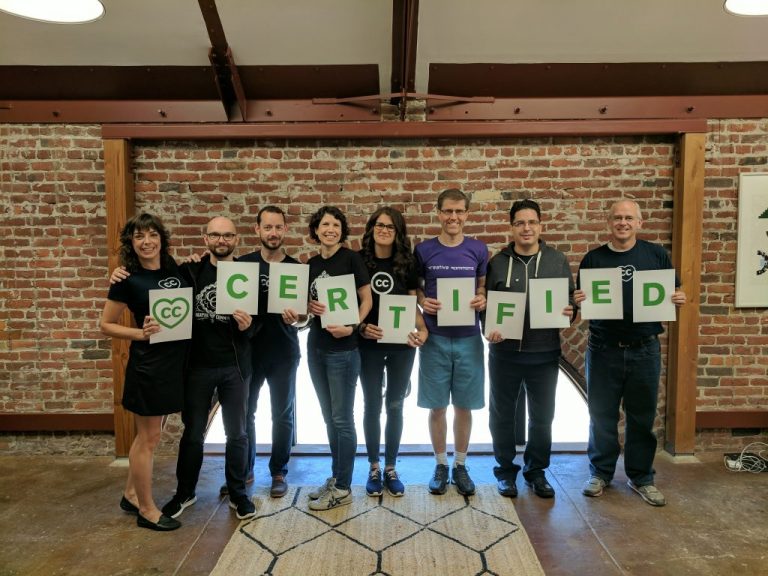
Students at Mayville State University can search for courses that use OER when registering for classes. Within the registration system, search for a class and then use the filters on the left-side to limit the results to course sections using OER. More information is included in the College Scheduler documentation sent to students each semester, reaching out to your advisor, and/or contacting Academic Records.





Are you interested in OER but have no idea where to start? Or maybe you are ready to create you own OER and want to share. This guide is a great starting point for learning how to both use and create your own. It was developed as a part of the September 2020 Creative Commons Certificate Course of Librarians and was funding through a North Dakota University System OER Faculty Stipend.
 Open Access
Open AccessOpen Access literature is freely available and openly licensed so everyone can access the information instead of the traditional publishing model. In the traditional publishing model, researchers are funded by governments and foundations for their projects. Then they submit their results to journal publishers and after peer review, their articles are published within academic journals which a generally only accessible through university libraries. These journals can be extremely expensive so only a few people are actually able to access the results. This system limits scholarly conversation and innovation.
"Open Access" by AJC1 is licensed under CC BY-NC-SA 2.0
Researchers now have a choice to publish their works openly instead of in a traditional journal. Open journals are available with the same system of peer review but without the high cost of access. This makes their research more accessible to everyone.
Open access to research can significantly speed up innovation. This can easily be seen with the current COVID-19 pandemic. Many different companies, universities, hospitals, and organizations are researching the disease and sharing their research openly so everyone can benefit in a greater understanding of the disease itself, how communities can lessen the impact, and which treatments work best, along with the creation of a vaccine. Having this research available openly allows for quicker responses to our ever-changing world. More information is available at UNESCO's Open access to facilitate research and information on COVID-19 webpage.
Looking outside the pandemic, Open Access is important to faculty and students. Libraries cannot afford subscriptions to every academic journal and while InterLibrary Loan does create a system where libraries can obtain a copy of almost any article for a student or faculty member, it is not always possible. Time restraints can also pay a role and force a student for faculty to pay $50-75 to a publisher in order to access a journal article immediately.
 Open Educational Resources
Open Educational ResourcesOpen Educational Resources (OER) are materials used in teaching that are both freely available and openly licensed to remove barriers for both instructors and students. While at first glance, it may seem like anything available on the open web is an OER, that is not true. While the Internet is the most-used platform for OER publishing, simply being available freely online does not mean that a resource openly licensed. OERs contain licenses that allow users to use, adapt, and share the work in a variety of ways. Only content with an open license (generally from Creative Commons) can be called an OER.
"On open educational resources -- Beyond definitions" by opensourceway is licensed under CC BY-SA 2.0
Faculty choosing an OER text for their courses has a lot more benefits than simply saving students money. David Wiley refers to the 5R permissions that help determine what resources can be considered an OER.
This material is an adaptation of Defining the "Open" in Open Content and Open Educational Resources, which was originally written by David Wiley and published freely under a Creative Commons Attribution 4.0 license
OER is a part of the broader Open Access movement. By publishing research in open access journals and teaching your courses with OER textbooks, faculty can show their students the importance of sharing knowledge widely and removing barriers to access. It helps create the social norm that information should be available to everyone and helps open the door to wider educational attainment.
"Open Educational Resources" is a derivative of the September 2020 Creative Commons Certificate Course by Creative Commons, licensed CC BY 4.0. Kelly Kornkven adapted content from the Creative Commons Certificate Course Unit 5 on CC for Librarians, by adapting the content for MSU faculty, staff and student and adding additional CC licensed graphics.

 You can become Certified in Creative Commons by taking part of the Creative Commons Certificate Course.
You can become Certified in Creative Commons by taking part of the Creative Commons Certificate Course.